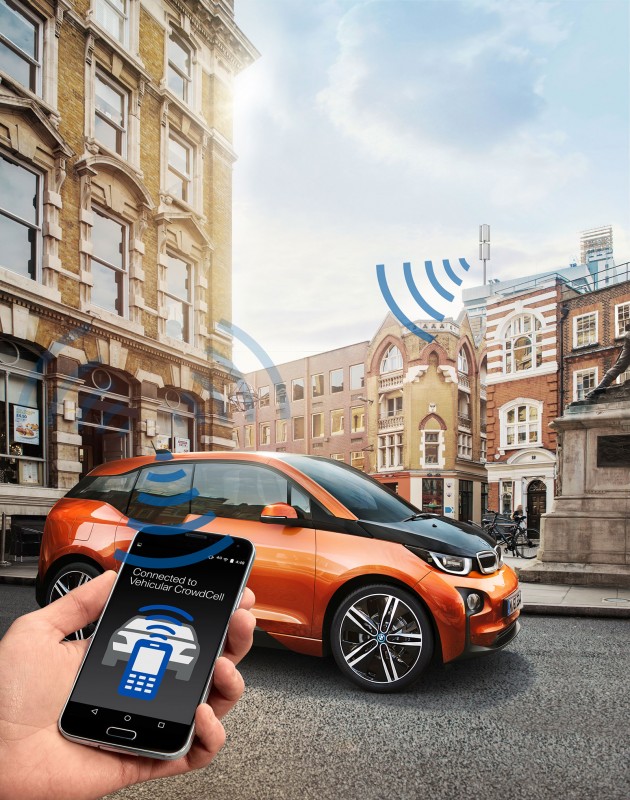This year’s Mobile World Congress in Barcelona (22-25 February 2016) is one of Europe’s most important communications shows. BMW has unveiled its research project, “Vehicular CrowdCell”.
Using the popular “crowd” buzzword, BMW’s project extends on last year’s “Vehicle Small Cell” that offered a mobile femtocell – a very small mobile phone base station connected to the phone network via the Internet – that optimises mobile radio reception inside vehicles with additional capacity and coverage of mobile networks.
In English, it means that your mobile phone (and the car’s own reception if fitted with a SIM) will have optimised reception.
We rely on our mobile phones more and more as mobile computers to reach destinations, link with our cars and generally use for pretty much everything you can think of. Mobile reception is therefore one of the major areas in which manufacturers are keen to optimise in order to improve experience, particularly when on the move or in a mobile vehicle.
One strategy to increase coverage and capacity of future networks is to integrate a large number of new small “cells” and relays in addition to the existing network of base stations. A car is perhaps an unusual solution for this, since it itself is a moving object but it is also a self-powered mobile device loaded with technology that can easily complement the system.
One possible application of “Vehicular CrowdCells” is for car-sharing fleets, particularly those using electric vehicles. For example, a large number of vehicles spread over the country could serve as local radio relays when parked. If one or more users are located close to a femtocell, it is activated on demand in order to increase the bandwidth or provide additional network coverage. In this way, performance of the existing network is optimised. Mobile phone users benefit from hotspots and higher data rates, while reducing “white spots” of reception, particularly in areas of low reception such as country parks, hilly areas etc. Dr. Peter Fertl, project manager at the BMW Group, explains,
“The “Vehicular Small Cell” will optimise in-vehicle connectivity of mobile devices for our customers. At the same time, the integration into a network of “Vehicular CrowdCells” will enable the ubiquitous and seamless availability of high-quality mobile radio connections outside the vehicle as well.”
For the “Vehicular CrowdCell” project, the BMW Group has teamed up with peiker and Nash Technologies to integrate the system into a BMW research vehicle.
Source; BMW

